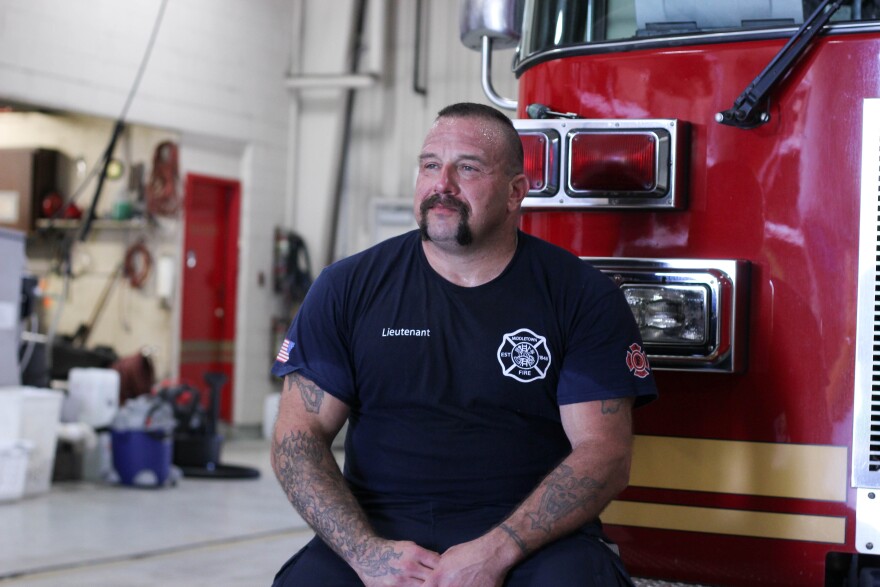At the Middletown, Ohio fire department, calls for actual fires are rare. These days the station responds to more calls for drug overdoses—four to five a day on average.
Firefighter Bryan Oliver goes on a lot of these runs. Oliver and his team administer Naloxone and then perform CPR. He says they may treat the same patient for multiple overdoses, sometimes in the same day.
“Anybody you talk to who does this job will tell you it’s frustrating and you put that to the side because you have a job to do,” he says.

Opioid overdoses continue to rise and for many cities and towns, the epidemic is starting to affect their bottom line. Middleton, population 48,791, has already seen nearly 600 overdoses this year—that’s more than it saw in all of 2016. Now Middletown city councilman Dan Picard has made a startling proposal. He’s suggested a three strikes rule: overdose two times and the third time medics may not respond. If overdoses continue at this rate, Picard says they won’t be able to afford to provide emergency services.
“If we don't do anything the city's going to run out of money.” he says.
Each dose of Naloxone, an overdose reversal drug, cost about $36 and depending on the potency of the opioid, one patient may require several doses. The department estimates they’ll spend up to $90,000 on Naloxone this year—that’s 50 percent more than their entire budget for all the medications aboard their ambulances.
Picard says that’s not the only cost. He calculates that each overdose run cost the city $1104. He counts the wear on the ambulance, the cost of drugs and the medics’ time.
His proposed three strikes policy would work like this: The first two times a person overdoses they would have to pay back every cent by performing community service. If that same person overdoses a third time, but they have not completed their community service an ambulance will not go out to help them. Picard says his plan has been called inhumane, but, he worries about what could happen when the city can't afford any emergency services at all.
“Not only will overdose patients be dying, accident patients will be dying, heart attack patients will be dying,” he says.
Picard doesn’t even know if this idea is legal, but the city needs a solution. From addiction treatment to a needle exchange, this year the opioid epidemic could cost Middletown over $2 million dollars—10 percent of the city’s annual tax revenue.
His plan has its critics. For one thing, even if were feasible, it might not make a big financial difference. According to the Fire Department, only 15 percent of overdose runs are for people who have had multiple overdoses. Chief Paul Lolli says, that means the bulk of the overdose runs, 85 percent, are for first time overdoses.
“A lot of people this these are habitual overdose run patients,” says Lolli. The scary thing about it, is that a lot of time it’s not.”
The chief of fire says the money will have to come from somewhere else. As emergency medical service providers they are legally and morally obligated to respond to an emergency.
“Most of us in the EMS field believe this is a disease,” says Lolli.
City attorneys are researching Picard’s three strikes plan. If they determine that it’s legal it will come up for a vote by city council as soon as next week.
Anecdotally, it may have some support from city residents. Firefighter Bryan Oliver says he can see why people in Middletown might support Picard’s idea.
“You know you’re driving down the road and sometimes there’s somebody laying on the sidewalk, they’re just they’re tired of what it’s doing to the community and to the country,” he says.
Out on Central Avenue, the city’s main drag, John Blankenship is sipping an afternoon coffee. Like many people in this city, he’s lost family to opioid addiction: his son died at 23 and his daughter died on her 25th birthday..
Blankenship says the city may face financial ruin, but as a taxpayer, and a father, he doesn’t think letting people die should be an option.
“God should be the only one who decides when somebody dies, not a councilmen,” he says.
This story was produced as part of collaboration between NPR, WOSU and Side Effects Public Media.






